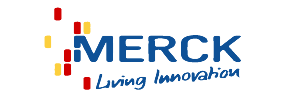Why we want to improve it?
According to the experimental record of Freiburg, the success rate is higher than 95%(32/33).
However, this result apparently lacks statistical significance.
In the result section, they emphasize that there is a light band at 1200bp, which they believe could indicate that the Golden Gate connection works well. However, after conducting several experiments by ourselves, we find that the key point to indicate whether Golden Gate connection works is not the band at 1200bp. If the band is not clear and specific in the gel, it indicates the experiment doesn’t go well. We can easily find several light bands under the band of 1200bp. Moreover, the second light band is somewhat lighter than the band at 1200bp. Although the Freiburg can explain the results with the repeatability of the TALE sequence, we suppose that the possibility of the mismatch of the sticky ends still can’t be excluded. Frankly speaking, we try to believe that they really made it, but if the success cannot be repeated, there must be something wrong with their system.
- Freiburg's protocol
- Restriction enzyme digestion of plasmid and TAL repeats and gel extraction respectively. By the mole ratio, plasmid to TALE is 1 to 5 and TALE to TALE is 1 to 1. Ligation with T4 ligase in 22 ℃over night.
- The same ratio of plasmid and TALE repeat, but add the TALE repeats one by one and ligation in 22 ℃, 30 minutes
- Every two parts connect at one time, and try to make three intermediates of 400bp, and then mix the plasmid to make the complete TALE.
- The same ratio and ligation with the program of 22℃ 2min, 40℃ 30,25 repeats.
Reference
- GONTERO, Brigitte, María Luz CÁRDENAS, and Jacques RICARD. “A functional five‐enzyme complex of chloroplasts involved in the Calvin cycle.” European journal of biochemistry 173.2 (1988): 437–443.
- Bogdanove, Adam J., and Daniel F. Voytas. “TAL effectors: customizable proteins for DNA targeting.” Science 333.6051 (2011): 1843–1846.
- !!参考往届iGEM的wiki不知道是否需要写上去,以及应该用什么样的格式
- Pailler, Jérémy, et al. “Phosphatidylglycerol:: prolipoprotein diacylglyceryl transferase (Lgt) of Escherichia coli has seven transmembrane segments, and its essential residues are embedded in the membrane.” Journal of bacteriology 194.9 (2012): 2142–2151.
- Deng, Dong, et al. “Structural basis for sequence-specific recognition of DNA by TAL effectors.” Science 335.6069 (2012): 720–723.
 "
"







